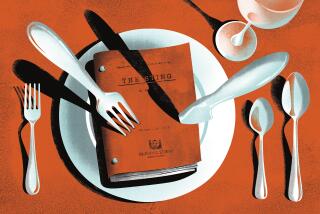A Biographer Delves Into His Own Past
What kind of person becomes a biographer? Someone who seeks out role models? Someone inclined to hero-worship? Someone who resents famous people and wants to expose their weaknesses? An armchair sleuth or amateur psychoanalyst looking for clues to human behavior? An academician hoping a biography will more likely find a publisher than an abstruse, theoretical work? Or, perhaps, as in the case of the highly esteemed and successful British biographer Michael Holroyd, someone who feels more comfortable thinking about other people’s lives than his own.
“My career as a biographer probably arose from my need to escape from family involvements and immerse myself in other people’s lives,” remarks Holroyd at the outset of his memoir, “Basil Street Blues.” The only child of divorced parents, brought up by his paternal grandparents and aunt in a gloomy and contentious household, Holroyd formed the habit of “invisibility” in his boyhood. He shunned the story of his own family, which was riddled with dissension and embarrassment. But Holroyd discovered a far more congenial world in the glories of classical music on the radio, books from the public library and the inventions of his imagination. He also became a watcher: “I never tire of watching. I watch, therefore I am. . . . This has been my exit from myself.”
Apart from an early foray into fiction, Holroyd made his career as a biographer. His first subject was Hugh Kingsmill, an all-but-forgotten writer. Subsequently, Holroyd tackled Lytton Strachey, one of the leading lights of Bloomsbury and best known for his iconoclastic biographical portraits of “Eminent Victorians.” Holroyd deftly applied Bloomsbury’s private standards of sexual frankness to Strachey himself. Something of a contrast to the bisexual, hyper-intellectual Strachey, Holroyd’s next subject was the earthy, hyperactive heterosexual painter August John. More recently, Holroyd tackled his most ambitious project to date: a multi-volume life of that nimblest of gadflies, George Bernard Shaw.
Only after years of immersion in other people’s lives did Holroyd feel the need to look into his own history. One might object that the man who delved into the most intimate details of other people’s lives tells us very little about himself in “Basil Street Blues.” On the other hand, the book is not an autobiography but a memoir: self-presentation will naturally take a back seat to the writer’s portrait of his family. Indeed, as he begins launching into a history of his various forebears, some impatient readers may feel inclined to ask (echoing the famous headline of a book review of Agatha Christie), “Who Cares Who Begat Michael Holroyd?”
But before long, one is caught up in these stories of love affairs and marriages gone sour, promising schemes that fail to deliver and people trapped in patterns of self-deception. Holroyd’s great-grandmother was only 30 when she committed suicide by swallowing carbolic acid. His grandfather unsuccessfully sought refuge from an unhappy marriage in the arms of a conniving adventuress who left him for someone richer. Holroyd’s fun-loving Swedish mother bolted from one man to the next, while his intelligent but luckless father vainly embarked on business ventures to restore the family fortunes.
While many memoirists delight in collecting bits of gossip and legend in the belief that they are recovering lost family history, Holroyd shows us how a professional biographer operates, looking up records and seeking corroborative evidence. This process sometimes casts doubt on the legends, leaving the truth-seeker more puzzled than when he started out.
But Holroyd’s refusal to embellish or romanticize does not make his book any the less affecting. He closes with a description of a visit to his aunt on her 96th birthday: “My aunt, bent double in her chair, her hair like fine white silk, her bruised skin thin as tissue paper, does not stir. She is far away beyond recall. . . . Then suddenly she looks up and gives that dazzling smile I recognise so well from the old albums. . . .” Some biographers manage to make extraordinary individuals seem dull. Holroyd is one of the few who can convey what makes ordinary as well as extraordinary mortals live in our minds.
More to Read
Sign up for our Book Club newsletter
Get the latest news, events and more from the Los Angeles Times Book Club, and help us get L.A. reading and talking.
You may occasionally receive promotional content from the Los Angeles Times.









